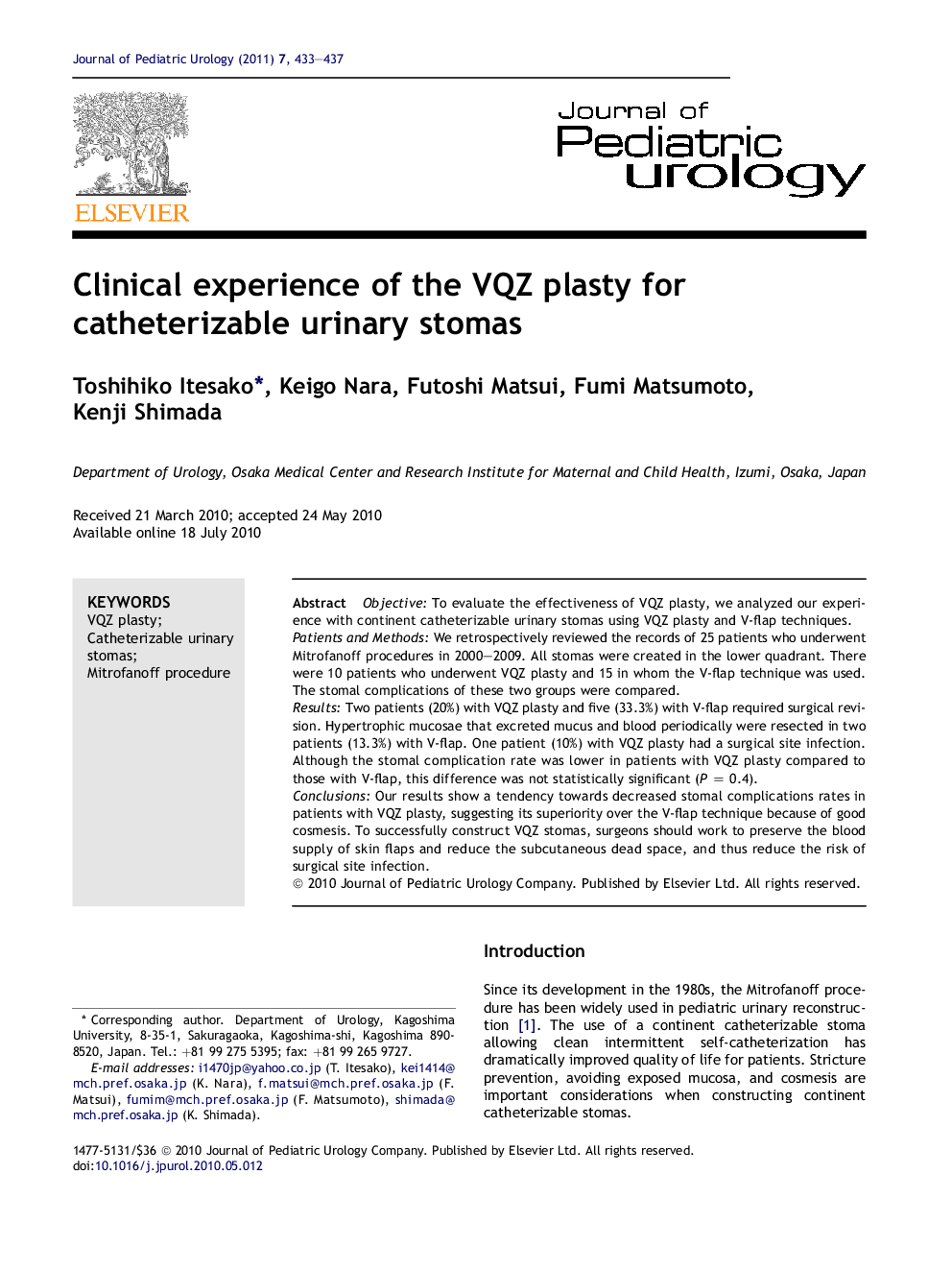| Article ID | Journal | Published Year | Pages | File Type |
|---|---|---|---|---|
| 4163534 | Journal of Pediatric Urology | 2011 | 5 Pages |
ObjectiveTo evaluate the effectiveness of VQZ plasty, we analyzed our experience with continent catheterizable urinary stomas using VQZ plasty and V-flap techniques.Patients and MethodsWe retrospectively reviewed the records of 25 patients who underwent Mitrofanoff procedures in 2000–2009. All stomas were created in the lower quadrant. There were 10 patients who underwent VQZ plasty and 15 in whom the V-flap technique was used. The stomal complications of these two groups were compared.ResultsTwo patients (20%) with VQZ plasty and five (33.3%) with V-flap required surgical revision. Hypertrophic mucosae that excreted mucus and blood periodically were resected in two patients (13.3%) with V-flap. One patient (10%) with VQZ plasty had a surgical site infection. Although the stomal complication rate was lower in patients with VQZ plasty compared to those with V-flap, this difference was not statistically significant (P = 0.4).ConclusionsOur results show a tendency towards decreased stomal complications rates in patients with VQZ plasty, suggesting its superiority over the V-flap technique because of good cosmesis. To successfully construct VQZ stomas, surgeons should work to preserve the blood supply of skin flaps and reduce the subcutaneous dead space, and thus reduce the risk of surgical site infection.
